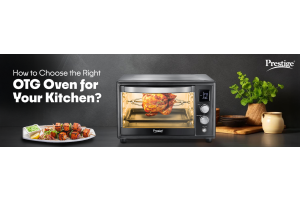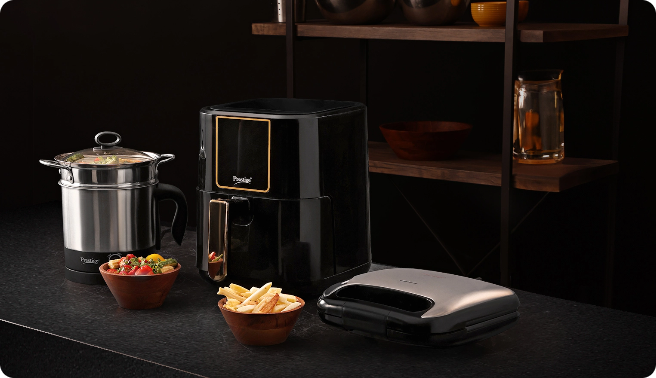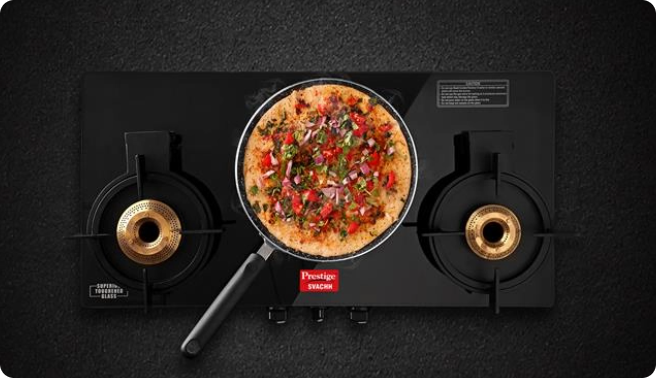Introduction
Induction cooking stands out as a revolutionary method in the dynamic realm of kitchen technology, blending the efficiency, speed, and precision seamlessly. Despite its increasing fame, induction cooking often falls victim to myths and misconceptions, making potential users hesitant. This blog post aims to dispel these notions surrounding induction cooking by debunking nine prevalent myths, shedding light on the truth. Whether you consider yourself a seasoned chef or claim to be an adventurous home cook, join us on a journey to unravel the realities behind these induction stove myths and explore the undeniable benefits of this modern culinary technology.
Myth #1: Induction Cooktops Are Expensive
One widespread myth that plagues the minds of potential users is that induction cooktops are alarmingly expensive. However, the reality is that the cost of best induction stoves in India has significantly decreased, rendering them more accessible. The initial price might be more than traditional stovetops, but in the long-term you can achieve 25% more energy efficiency and resulting savings make them a wise investment. Induction cooktops are not only remarkably energy-efficient but also reduce cooking times, contributing to both time and cost savings. The expanding market offers various affordable options, dispelling the outdated notion that induction cooktops are excessively expensive.
Myth #2: Induction Cookware Is Limited and Expensive.
Another belief is that induction-compatible cookware isn’t easily available and quite pricey. In actuality, induction-friendly cookware is quite commonplace in the market. Prestige’s cookware range comes in a variety of prices and works well with induction cooking. Affordable options specifically designed for induction cooktops are not hard to find, banishing the myth that suitable cookware is both scarce and costly. With budget-friendly sets & premium options to choose from, diverse and cost-effective options abound for those keen to explore the many benefits of induction cooking. Induction cooktops are usually friendly with Stainless Steel, Triply, and Cast Iron material, ensuring compatibility with a wide range of cookware options.
Myth #3: Induction Cooktops Are Not Energy Efficient
Amongst people who don’t know how does induction cooking work, there's a persistent myth suggesting that induction cooktops lack energy efficiency. In reality, these appliances rank among the most energy-efficient cooking options available. To minimize energy loss, our power saver technology only supplies necessary amount of heat to the cookware. Unlike traditional stovetops, induction cooktops heat up rapidly and only transfer energy to the cookware, reducing unnecessary energy consumption. Numerous scientific studies have consistently demonstrated the efficiency, contributing to lower electricity bills over time.
Myth #4: Induction Cooking Is Not Safe
Is induction cooktop safe, is often a question in the mind of consumers. However, on further research, one can see that it’s considered one of the safest methods available. Induction cooktops lack open flames or disproportionately hot surfaces, minimizing the risk of burns and accidents. Heat is generated directly in the cookware, and the cooktop surface remains relatively cool. Safety features like pan sensor & increased control over heat further enhance their safety. While caution is essential in any cooking method, the belief that induction cooking is inherently unsafe overlooks the built-in safety features designed to protect users and create a secure cooking environment. The cookware helps the kitchen be flame and smoke free and keeping the kitchen cool.

Myth #5: Induction Cooktops Are Slow to Heat Up
While discussing why induction cooking is bad, a topic that always comes up is that they are slow to heat up. Many people wonder - is induction good for indian cooking? And the short answer is yes, they are good for Indian cooking. Contrary to this common misconception, induction cooktops are renowned for their remarkable speed and efficiency in reaching desired cooking temperatures. Unlike traditional stove tops that rely on open flames, induction cooktops use electromagnetic induction to heat the cookware directly. This results in almost instant heat transfer and rapid temperature adjustments, providing users with precise control over their cooking process. The belief that induction cooktops are slow to heat up stems from outdated perceptions and technologies, as modern inductions have overcome this and are recognized for their swift response and quick cooking capabilities. This is also why they are great for Indian cooking as well.
Myth #6: Induction Cooking Is Complicated
To debunk this rumor, all you have to do is learn the increasingly simple method of how to cook on an induction stove. Induction cooktops are user-friendly and easier to operate than their traditional counterparts. While the technology may seem advanced, the basic principles are usually quickly grasped. Users need only place induction-compatible cookware on the surface, and the cookware itself heats up, offering precise temperature control. Touch controls, timers, locks, and other features enhance convenience. The learning curve is minimal, and once users become acquainted, in no time, the simplicity and efficiency that induction cooking brings to the kitchen is appreciated.
Myth #7: Induction Cooktops Can Only Boil Water
Due to older technologies, people often mistake that induction cooktops are limited to boiling water. However, nowadays, these cooktops are incredibly multi-faceted, handling a wide range of cooking tasks beyond boiling. They are suitable for simmering, sautéing, frying, and delicate tasks like melting chocolate (essentially, any type of cooking that you can think of). Electromagnetic induction technology ensures rapid and efficient heating, allowing users to cook various dishes with accuracy and speed. Prestige’s induction cooktops are specially designed for Indian cooking. That’s why they come with preset Indian food menus that make cooking not only quicker, but also help with making sure that the food is cooked to perfection.
Conclusion
In conclusion, debunking the myths surrounding induction cooking reveals a technology that is not only innovative but also practical, efficient, and safe while we also learn what are the benefits of induction cooking. By debunking the myths, we have tried to answer the age old question - whether induction cooking is good or bad for you - with all answers leaning towards the latter. The misconceptions about expense, limited compatibility, safety concerns, slow performance, and complexity have been refuted by advancements in design and manufacturing. Induction cooktops are now affordable, adaptable, and incorporate safety features. Contrary to the myths we dispelled, they offer rapid heating and user-friendly controls, making them a great, accessible choice for the modern kitchen. As we separate fact from fiction, it becomes evident that induction cooking is a revolutionary and efficient culinary method with undeniable benefits.
Frequently Asked Questions (FAQs)
1. What are induction cooking disadvantages?
Induction cooking offers several advantages but comes with a few things to consider. The initial cost is higher than the traditional counterpart, although offset by long-term energy savings. You need specific cookware that has a magnetic base. Usually, Induction Cooktops are compatible with stainless steel, triply, and cast iron. Professional installation may be required due to specific electrical needs and as a standard safety measure. While induction cooktops are generally quiet, a low hum from the internal cooling fan may be noticeable. There's somewhat of a learning curve for newcomers adjusting to precise temperature control and rapid heating. Despite these factors, many find the benefits of induction cooking outweigh these considerations.
2. How Energy-Efficient Are Induction Cooktops?
Induction cooktops are renowned for their energy efficiency. The direct transfer of heat to the cookware and the ability to adjust temperatures instantly contribute to reduced energy consumption compared to traditional stovetops. Not only do users often experience lower energy bills, but they also enjoy faster cooking times.
3. Can I Use Induction Cooktops with Any Cookware?
While induction stove tops are compatible with various cookware materials like steel, it's imperative to ensure that your pots and pans have a magnetic base for effective heat transfer. Non-magnetic materials, like aluminum or copper, won't work directly on induction cooktops. However, using an induction interface disk can make non-compatible cookware suitable for induction cooking, and you can adapt all your utensils with just one of them.
4. How Do I Clean an Induction Cooktop?
Cleaning induction cooktops is a very simple procedure. Once the surface has cooled, a gentle wipe with a damp cloth is usually sufficient for daily cleaning. Stubborn stains can be removed with a mixture of water and vinegar or a specialized cooktop cleaner. It’s better to avoid abrasive materials that could scratch the surface.
5. Is induction cooking cheaper than gas?
Induction cooking is often more cost-effective than gas in the long run. While the initial purchase cost for induction cooktops may be higher, they are significantly more energy-efficient, leading to lower electricity bills over time. Additionally, induction cooktops provide faster cooking and heating, contributing to overall energy savings.















